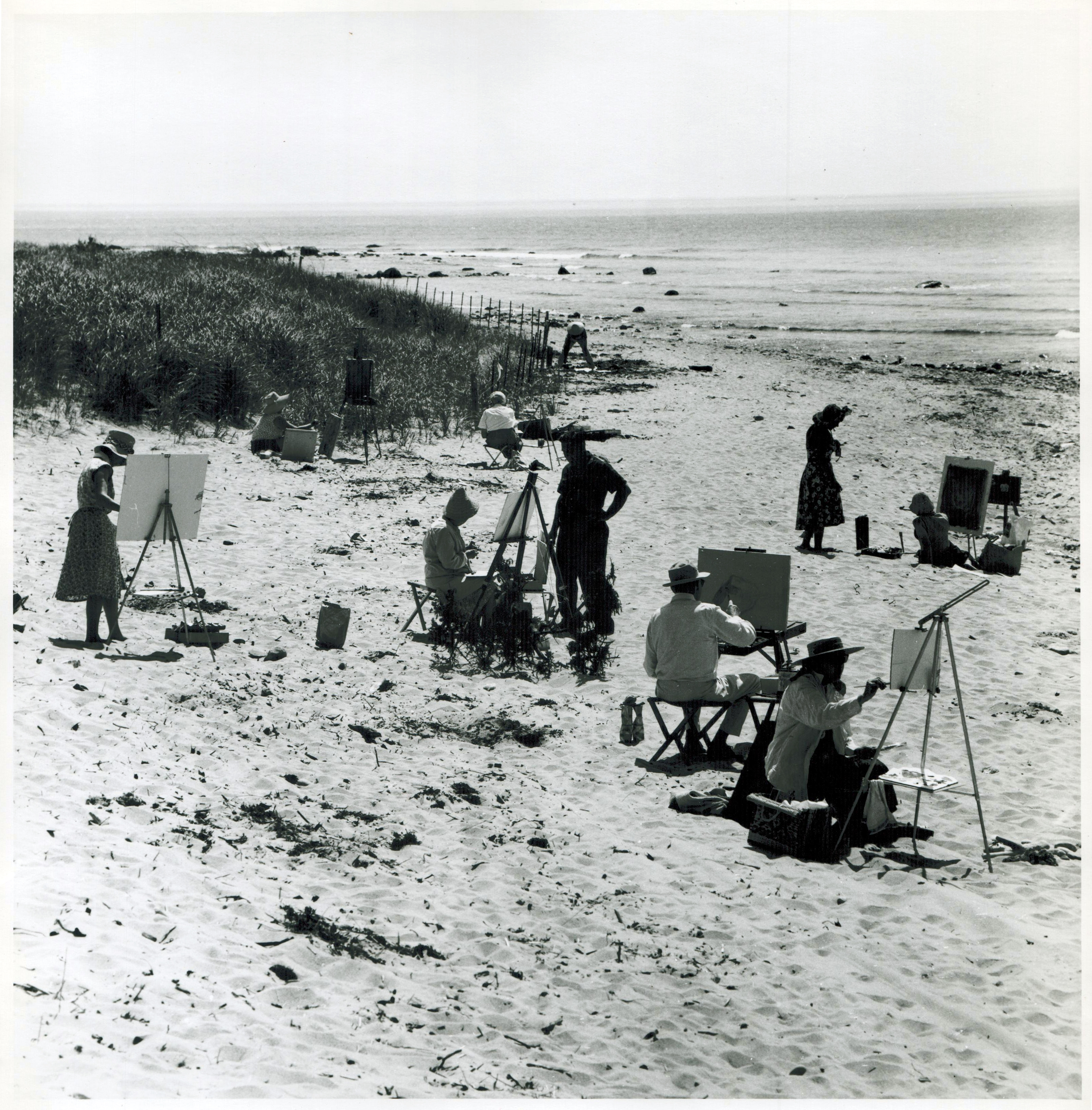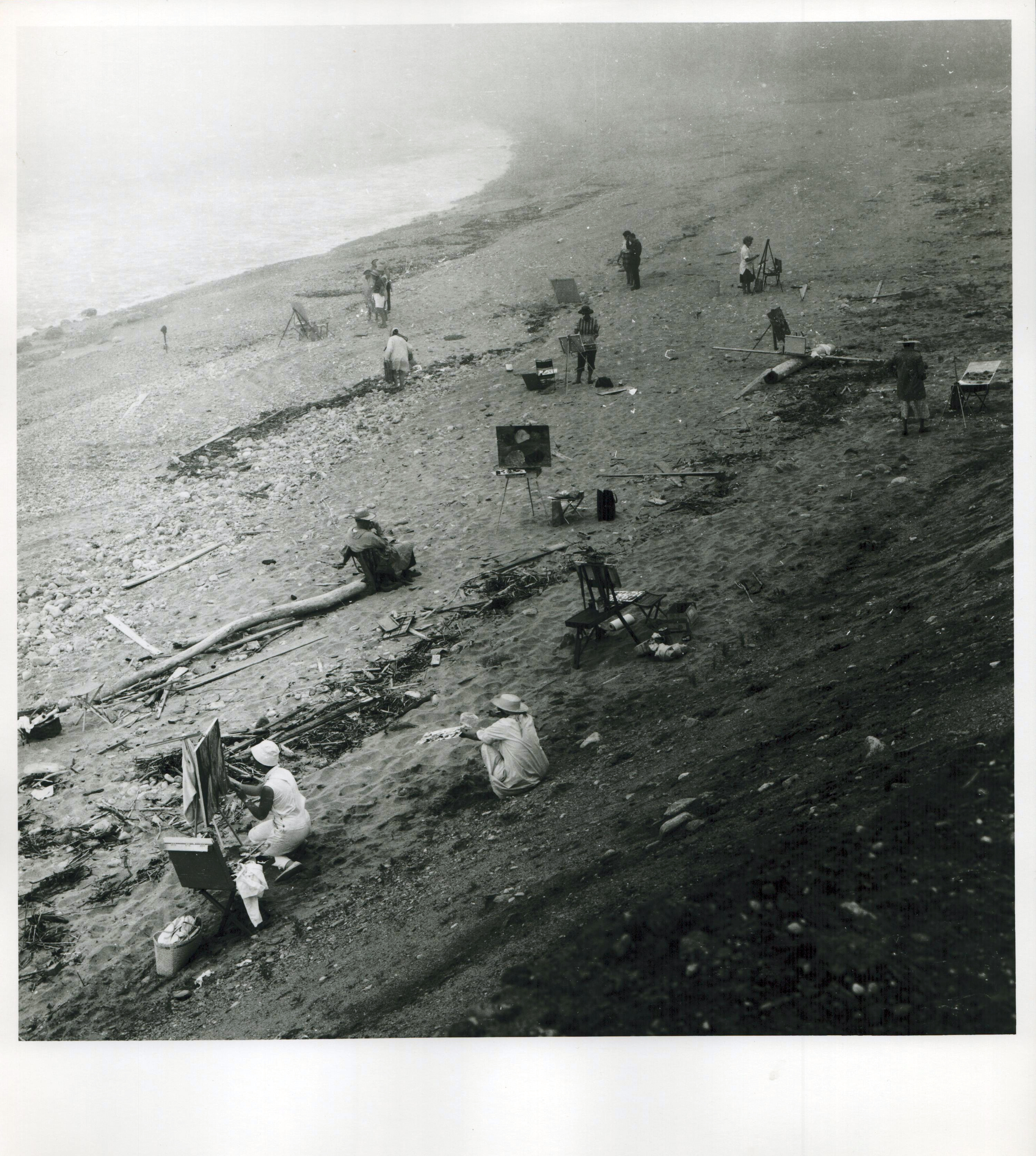
For over a century, the East End of Long Island has drawn artists from New York City and beyond, inspired by the raw natural beauty of its shorelines, forests, grasslands, glacial moraines, and built structures like saltboxes, windmills, and the Montauk Point lighthouse.
In 1940, Victor and Mabel D’Amico, an artist and educator couple from New York City, built a beach house at Lazy Point in Amagansett where they would spend their summers and eventually relocate to permanently. From 1948 to 1969, Victor D’Amico was the Director of the Education Department at the Museum of Modern Art (MOMA). Starting in 1954, he hosted satellite classes for MOMA’s education department on the East End for the “convenience of vacationers,” as noted in the East Hampton Star in June 1958. These early programs included classes for children held at Odd Fellows’ Hall on Newtown Lane in East Hampton and adult instruction in landscape painting and figure drawing offered at Ashawagh Hall in Springs.
Victor advocated for a permanent home for art education in East Hampton. In March 1960, with the help of local baymen and carpenters, he moved a former World War II naval barge onto the southern shore of Napeague Harbor. A second story and deck were added to provide panoramic views of the harbor and the Atlantic Ocean. The Kearsarge Art Center opened on July 4th, 1961, and was operated by the Institute of Modern Art, an affiliate of MOMA. The original name, Kearsarge, was derived from a Native American word for “place of heaven.” The center, locally known as The Art Barge, was renamed The Victor D’Amico Institute of Art in 1982.
“The 110-foot-long converted barge contains two large studios, an art store and galley, a cabin lounge with art library and outside cantilevered decks for working out of doors or sunbathing,” stated a press release from MOMA in 1963. “Classes also frequently meet on location, at the ocean beach or at picturesque harbors in the area.” The off-site locations included Coconuts Beach in Montauk, where the two embedded photographs were taken during an outdoor landscape painting class led by Victor D’Amico in the summer of 1962. Painters are pictured strewn across the beach much like the driftwood and debris washed ashore.
Coconuts Beach, a popular surfing and fishing destination, lies between Ditch Plains and Montauk Point. The name “Coconuts” comes from the wreck of the Elsie Fay on February 17, 1893. The schooner, carrying a cargo of logwood and coconuts, was bound from Grand Cayman to Boston when it struck rocks off the coast during a heavy snowstorm. Coconuts littered the shoreline, much to the delight of Montauk residents, who had “coconuts in every style for about a year,” recalls Jeannette Edwards Rattray in Discovering the Past.

The photographs were taken by Kathryn Abbe, an editorial and fashion photographer, who like D’Amico and many artists before her summered in Montauk from New York City. Her summer cottage was located on the ocean bluff at the eastern end of Old Montauk Highway. These two photographs are included in a portfolio titled On Montauk, which Abbe donated to the Montauk Library Archives. In the portfolio introduction, Abbe writes, “Montauk has many moods…For more than fifty years, I have tried to capture it with my cameras: Hasselblad for black and white, Nikon for color, and in recent years, Olympus for ease and mobility. I trust my vision will help Montauk to hoard its precious treasures.”
Kathryn Abbe’s portfolio capturing Montauk’s precious treasures will be on view through Labor Day in the library’s Local History Exhibit Center.

Reply or Comment